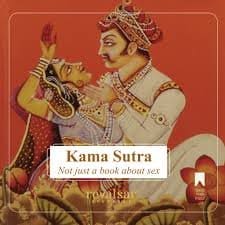
First Part Of the Kamasutra
When we talk about ancient Indian law, the big names—like Manusmriti and Arthashastra—usually steal the spotlight. But tucked away in the background is a quieter, lesser-known text that deserves just as much attention: The Dattaka-sutra. It’s not flashy, but it’s packed with fascinating details about how adoption worked in Hindu society. And honestly? It’s way more detailed and thoughtful than you might expect. This ancient guide, not just the rules, but the beliefs and values behind them. Kamasutra is divided into seven parts. This is the first part of the Kamasutra
So, What Is the Dattaka-sutra?
Okay, quick breakdown: Dattaka means “given” or “adopted,” and sutra basically means a short, snappy rule or statement. Put them together, and you’ve got a guidebook of sorts for how adoption worked in Hindu law.
It’s traditionally credited to Apastamba, one of the old-school sages who put together the Dharma Sutras—those were the ancient handbooks on how to live a good, dharmic life. Later on, Katyayana added his own flair with a detailed commentary called the Dattaka-mīmāṁsā, which helped unpack and explain the original rules.
Back in those days, adoption wasn’t just about growing your family—it had serious spiritual and legal weight. A son wasn’t just someone to inherit property; he was essential for performing sacred rituals that helped your ancestors chill in the afterlife.
Why Adoption Was Kind of a Big Deal
In traditional Hindu culture, having a son was considered super important. Sons were the ones who performed shraddha (rituals for the dead), and without one, your whole family line could basically stall out—both socially and spiritually.
So, if a family didn’t have a son, adoption became the go-to option. But this wasn’t just a casual arrangement—you couldn’t just say, “Hey, we’ll take your kid.” There were rules. Lots of them. The Dattaka-sutra laid it all out.
The Rules: How Adoption Was Supposed to Work
Let’s break down what the Dattaka-sutra (and Katyayana’s follow-up) had to say:
1. Who Could Adopt?
- Only men could adopt. Yep, women weren’t in the picture here.
- The adopter had to be mentally sound and physically capable of performing rituals.
- Adoption had to happen during the adoptive father’s lifetime—no posthumous adoptions allowed.
- Both the adopter and the biological family had to be of the same caste.
2. Who Could Be Adopted?
- Only boys—girls were excluded.
- The boy had to be from the same caste as the adoptive father.
- He had to be younger than the man adopting him.
- He couldn’t be the only son of his biological parents (so their family line didn’t end).
- The boy should be unmarried and not committed to religious life (like becoming a student or monk).
3. Who Could Give the Child in Adoption?
- Usually, it was the father’s call.
- If the dad wasn’t around, the mother could do it—but only if male relatives didn’t object.
- The process had to be done willingly and in the best interest of the child.
4. Rituals and Ceremonies
You couldn’t just take a kid in and call it a day. There were some serious ceremonies involved:
- Datta-homa: A sacred fire ritual.
- Sankalpa: A formal statement of intent.
- Physical Hand-Over: The child had to be literally given and accepted in a public, ceremonial way.
- Witnesses: Usually elders or respected folks from the community were present.
These rituals weren’t just for show—they made the adoption legally and socially binding.
5. What Happened After Adoption?
- The child cut all legal ties with his birth family.
- He became the full heir of the adoptive father.
- He took on all religious and familial duties just like a biological son.
- He couldn’t inherit anything from his original family anymore (unless the adoption was annulled).
6. When Adoption Wasn’t Valid
Some cases were considered outright invalid:
- If the child was the only son of his biological parents.
- If proper rituals or witnesses were skipped.
- If a woman adopted without legal backing.
- If caste rules weren’t followed.
- If the child had already been adopted by someone else.
7. Age and Limits
- The child had to be young enough to adapt to a new family and learn its customs.
- Only one son could be adopted through this method. No collecting heirs like baseball cards.
And What About Women and Girls?
Well, yeah. The Dattaka-sutra kind of left them out. Women couldn’t adopt, and girls couldn’t be adopted. It was a very male-centered system, reflecting the norms of the time.
Fast forward to today, though, and things have changed (thankfully):
- The Hindu Adoptions and Maintenance Act (1956) says women can adopt too.
- Daughters can be adopted and are treated equally.
- All the old-school caste and gender rules? Gone.
Still, these ancient laws laid the groundwork for the modern legal system.
Why This Still Matters
You might be wondering why we’re even talking about a centuries-old adoption manual. But here’s the thing: it shows how ancient thinkers dealt with real-world problems in structured, thoughtful ways.
The Dattaka-sutra gives us a peek into a time when law and spirituality were totally intertwined. It wasn’t just about having kids—it was about duty, tradition, and legacy.
By understanding texts like this, we get:
- A better grip on the roots of Hindu law
- Insight into how religion shaped legal thinking
- A deeper appreciation for ancient India’s social fabric
Wrapping It Up
So yeah, the Dattaka-sutra might not be popular, but it’s a fascinating glimpse into the past. It’s kind of amazing how seriously people took something like adoption, not just as a legal act, but as a sacred responsibility.


